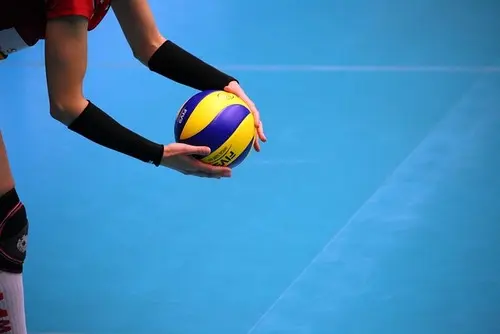History of Volleyball Federations

Formation and Evolution of Volleyball Governing Bodies
The history of volleyball federations reveals the global journey of a sport that evolved from its humble origins to become a world-renowned athletic discipline. Volleyball was invented in 1895 by William G. Morgan, a physical education director at the YMCA in Holyoke, Massachusetts.
Initially, Morgan sought to create a game that combined elements of basketball, baseball, tennis and handball but with less physical contact. This new sport was originally called “mintonette,” and quickly grew in popularity across the United States.
As volleyball spread, it required formal rules and structures to manage competitions, rules and player development. This need led to the formation of various volleyball federations and governing bodies worldwide. These federations have played an essential role in standardizing the sport, promoting it internationally and organizing competitive events.
Early Development and the Formation of National Federations
In the early 20th century, as volleyball gained popularity beyond the United States, the need for national volleyball federations became apparent. Countries such as Japan, the Philippines and Canada were early adopters of the sport, leading to the creation of national federations to manage and promote volleyball.
These early federations often operated under the auspices of existing sports organizations, like the YMCA, which helped introduce volleyball to different regions.
The sport’s spread was accelerated by U.S. military personnel stationed overseas during World War I and II, who played volleyball recreationally and shared it with locals in Europe, Asia and other regions. By the 1920s, several countries had already developed their own volleyball associations, including Canada, Japan and the Philippines, each adapting the game to fit their cultural and athletic environments.
Founding of the International Volleyball Federation (FIVB)
The global expansion of volleyball created a need for an international governing body to standardize rules and organize international competitions. In 1947, representatives from 14 countries gathered in Paris to discuss the formation of an international volleyball organization.
The result was the founding of the Fédération Internationale de Volleyball (FIVB), which became the world’s premier governing body for the sport.
The FIVB’s first president, Paul Libaud, a French sports administrator, was instrumental in the federation’s growth. Under his leadership, the FIVB expanded from its original 14 member nations to over 150 by the 1970s. The FIVB’s early years were focused on creating uniform rules, establishing competitive events and setting a foundation for the sport’s global expansion.
The FIVB’s efforts led to the creation of the first men’s World Championship in 1949 in Prague, Czech Republic and the women’s World Championship in 1952 in Moscow, USSR. These events cemented volleyball as a competitive international sport and demonstrated the FIVB’s capacity to organize large scale tournaments.
Volleyball’s Inclusion in the Olympics and FIVB’s Role
A major milestone for volleyball came in 1964, when the sport was included in the Olympic Games in Tokyo. This inclusion was largely the result of FIVB’s lobbying efforts, as it sought to bring volleyball to the global stage. Olympic recognition helped volleyball gain popularity and respect as a major international sport.
The inclusion of volleyball in the Olympics elevated the FIVB’s role, leading it to focus on developing competitive structures for both men’s and women’s teams, expanding youth development programs and promoting beach volleyball.
The FIVB also began establishing continental confederations, such as the Asian Volleyball Confederation (AVC), the Confederation of African Volleyball (CAVB), the European Volleyball Confederation (CEV), the South American Volleyball Confederation (CSV) and the North, Central America and Caribbean Volleyball Confederation (NORCECA).
These continental federations enabled the FIVB to oversee regional competitions and development programs more effectively.
Growth of Continental Federations
The establishment of continental federations under the FIVB umbrella was essential for expanding volleyball’s reach. Each confederation served as a regional governing body, organizing competitions, training officials and promoting the sport within its territory.
Asian Volleyball Confederation (AVC): Formed in 1952, the AVC was instrumental in promoting volleyball across Asia, where the sport was already popular in countries like Japan and the Philippines. The AVC organizes events such as the Asian Volleyball Championship, which attracts teams from across the continent.
Confederation of African Volleyball (CAVB): The CAVB was established in 1972 to support volleyball development in Africa. Although volleyball was not as widely played on the continent initially, CAVB has made strides in growing the sport and creating competitive opportunities for African teams.
European Volleyball Confederation (CEV): Established in 1963, the CEV has been one of the most active continental federations, organizing premier events such as the European Volleyball Championship and the Champions League. Europe has produced some of the world’s top volleyball teams and the CEV plays a central role in promoting the sport across the continent.
South American Volleyball Confederation (CSV): The CSV, formed in 1946, has been influential in promoting volleyball in South America, especially in Brazil, which has become a powerhouse in both indoor and beach volleyball. The CSV organizes the South American Volleyball Championship, among other competitions.
North, Central America and Caribbean Volleyball Confederation (NORCECA): NORCECA was founded in 1968 to oversee volleyball in North America, Central America and the Caribbean. The confederation hosts events such as the NORCECA Championship, providing competitive opportunities for teams in the region.
Evolution of Volleyball Governance and Modernization Efforts
Over the years, volleyball’s governing bodies have evolved to meet the sport’s changing needs. The FIVB has expanded its focus beyond indoor volleyball to include beach volleyball, which saw a rapid rise in popularity in the 1980s and 1990s.
Beach volleyball was included in the Olympics for the first time in 1996, marking a new chapter in volleyball’s history and increasing the sport’s visibility worldwide.
To ensure fairness and uniformity, the FIVB has continually revised its rules, introducing changes to scoring systems, court sizes and player regulations. For example, in 1999, the FIVB introduced the rally point scoring system to speed up matches and increase their entertainment value.
The introduction of the libero position in the late 1990s also brought significant changes, allowing for specialized defensive play and adding a new dimension to the game.
Volleyball Federations Today and Future Prospects
Today, the FIVB stands as one of the largest sports federations globally, with over 200 national federations as members. The FIVB and its affiliated continental federations continue to expand volleyball’s reach through a wide range of initiatives.
They organize grassroots programs to introduce volleyball to new generations, develop coaching and officiating standards and ensure gender equality within the sport. Volleyball federations also leverage media partnerships and digital platforms to increase the sport’s visibility and connect with fans.
The FIVB’s ongoing efforts to innovate and modernize the sport include embracing technology such as video review systems, which have been implemented to minimize human error in officiating. These technological advancements, along with efforts to adapt the sport for television and streaming, have further popularized volleyball.
Looking ahead, volleyball federations face new challenges and opportunities, including the need to foster sustainability in sports, address issues related to athlete welfare and maintain the sport’s integrity. With its global appeal and dynamic governing structure, volleyball continues to grow, supported by a robust framework of federations that are committed to promoting the sport across borders.
The story of volleyball federations is one of adaptability, cooperation and the relentless pursuit of excellence in one of the world’s most popular sports.

